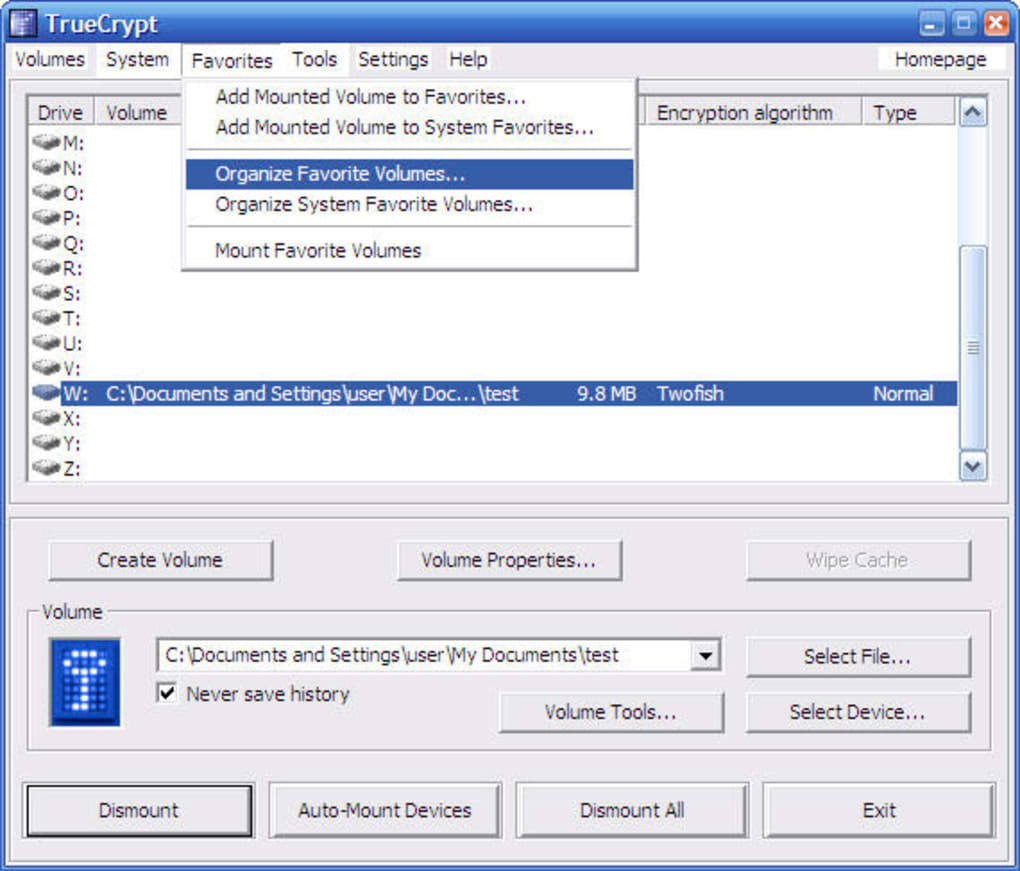

- #Truecrypt files full
- #Truecrypt files portable
- #Truecrypt files pro
- #Truecrypt files software
- #Truecrypt files crack
Maybe I could also save the command-line instruction directly within SyncBack Pro instead of using an extra batchfile.īut as I said in the very first paragraph - I'm not really seeing the saving of the password as critical in that case, as someone breaking into my system would have won the fight anyhow. I know you should never save the PW plaintext, but I guess BoxCrytor and similar solutions also do it this way when storing the PW within the program so you don't need to re-enter it.? Is this a security flaw, compared to using Boxcryptor the way I currently am using it, when I put the TC-volume password right into the batch file which I'm using to auto-mount the volume before mirroring files? SyncBack Pro runs as elevated process to be able to mirror even "locked" files, so I could also make the batchfile only readable by admin-users, so that no other "simple" executable without elevated rights could read its contents. When I'd use the TrueCrypt workflow, I'd want an automated solution, that means, I'd need the batchfile to contain the password for the TC container file to mount it right before mirroring with SyncBack Pro. Performance is not the main goal when it comes to cloud-security IMO.
#Truecrypt files full
Besides that, TrueCrypt is open source with a full source code audit and I could even use some cascades, i.e. Dropbox would not have any problems synchronizing thousands of small files. This way, I would have ONE big container file, i.e. Apart from that, I'd love to use a more "powerful" encryption algorithm to make me even more comfortable about putting private files in the cloud, I'm a little bit paranoid but still love the backup-abilities here.Īs Dropbox supports synchronizing only the changed parts of TrueCrypt Containers, I thought about using a batch-script to mount the container file before mirroring files with SyncBack Pro, and then using another script to dismount after mirroring.But still, this does not say it couldn't contain backdoors or anything else.
#Truecrypt files software
The software is still proprietary, even though it is at least compatible with EncFS which makes me more comfortable regarding security.When mirroring many many small files, Dropbox sometimes gets stuck slightly.EncFS is not the "newest" algorithm and I read some things about it that it has some flaws.Now what annoys me a bit about using BC this way are those things: Things I don't like about the current setup I mean, if he gets access to my computer, I have problems anyhow. I think this is not really a big deal, as this PW is not used anywhere else and should only avoid that someone eventually breaking in the Dropbox-Servers should not be able to decrypt files. The passwords to the EncFS volume are stored within Boxcryptor, so they have to be stored somewhere (maybe windows registry or something) locally on my computer. Those get then encrypted by BC directly into C:\Dropbox\BoxcryptorTarget. So, original password is still required to open the container file.Currently I'm using Boxcryptor Classic 1.x (still compatible to EncFS) to mirror some files with SyncBack Pro into the virtual Boxcryptor-Harddisk.
#Truecrypt files crack
TCHunt can only detect volumes but not crack the password. The application will then scan all files based on the attributes above and list each found containers in the program interface. To search for containers, accept the terms of service on program start, and select a root folder which you wish to scan. The suspect file must not contain a common file header.The suspect file contents pass a chi-square distribution test.Step 6: Browse to the location where you want to create the encrypted folder and name the folder. Step 5: Select the volume location by clicking on âselect file’. The suspect file size is at least 19 KB. Step 4: Select the volume type âstandard TrueCrypt volume’ and click the Next button.It can create a virtual encrypted disk within a file, or encrypt a partition or the whole storage device ( pre-boot authentication ). The suspect file size modulo 512 must equal zero. TrueCrypt is a discontinued source-available freeware utility used for on-the-fly encryption (OTFE).Many users disguise their TrueCrypt volumes by giving them random filenames and extensions, however TCHunt completely ignores filenames and extensions, and uses file attributes for detecting encrypted volumes.įollowing file attributes are looked upon by TCHunt: Particularly for whole-disk encryption, using BitLocker (if it’s available in your edition of Windows) is a fine solution. At the time, BitLocker had enough issues that I essentially dismissed it. This can be handy if you forgot where you placed your TrueCrypt volume. TrueCrypt alternative 2: BitLocker This is the alternative recommended by the original TrueCrypt developers on their way out.
#Truecrypt files portable
TCHunt is a free portable application that can be used to find all encrypted and disguised TrueCrypt containers on a Windows system.


 0 kommentar(er)
0 kommentar(er)
